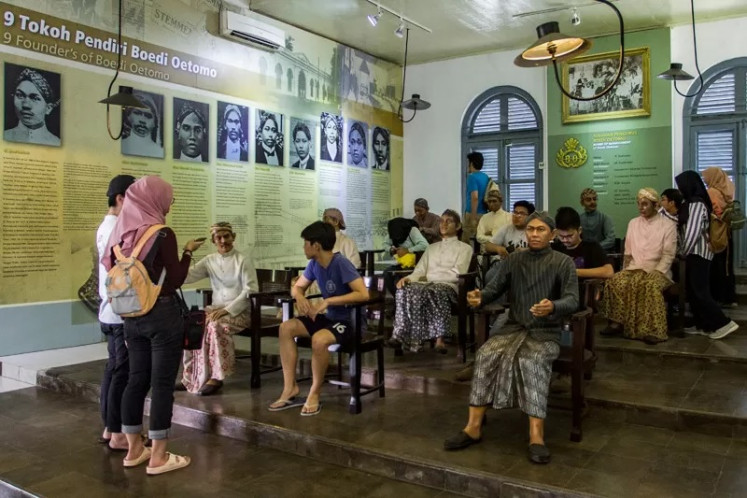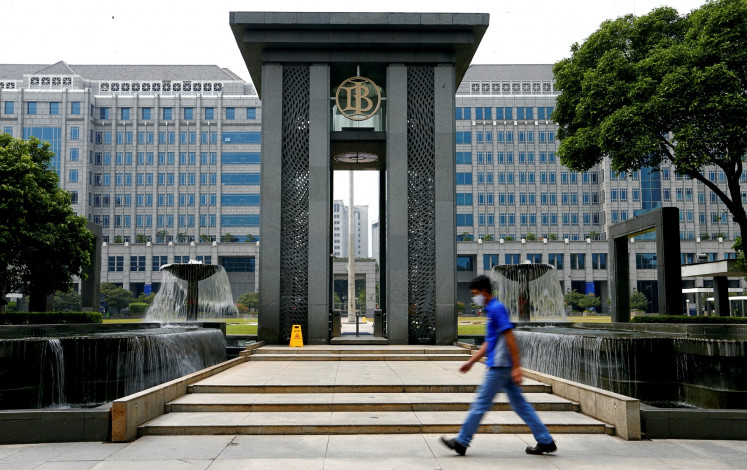Bali at risk of falling victim to its own tourism successes
The success of Bali tourism has caused severe social and environmental problems for the island of 3
Change text size
Gift Premium Articles
to Anyone

T
he success of Bali tourism has caused severe social and environmental problems for the island
of 3.9 million people, experts say.
“Bali is threatened to become the victim of its own tourism success story. The high growth of visitors every year has strained the island’s resources and infrastructure beyond its limits,” said Jan Hendrik Peters, professor of service management from the Netherlands, during an international seminar on green tourism in Sanur over the weekend.
According to the professor, tourism has driven the island’s economy in a positive way as showed by its annual Gross Domestic Product (GDP) growth of around 16 percent from the period 2006 to 2008.
“Over the years, Bali GDP has grown as a result of the development of tourism activities. Tourism has grown significantly.”
The number of foreign visitors to the island has dramatically increased from 1.3 million in 1997 to 2.4 million in 2009. This year, Bali expected to welcome 2.6 million foreign arrivals. However, tourism has brought with it negative impacts on the environment and natural resources.
“The character of tourism has changed over the years. Although Bali is still a luxury destination with its 200 five-star hotels. Mass tourism is on the rise, resulting in developments of hotels all along the coastline of Bali,” Peters said.
“The increase in absolute tourist arrivals and the associated rise in the number of hotels has triggered a number of effects that are harming the environment and the attractiveness of Bali as a tourist destination,” he said.
One of the obvious examples of environmental degradation is the increase of air and water pollution. Decreasing forest and agriculture areas as well as clean water resources are among the problems Bali is facing as a result of rapid increase in tourist numbers.
The one-day seminar, organized by Tri Hita Karana Foundation and the Bali provincial government, was part of the government’s Clean and Green Bali Campaign and Green Province program.
Gde Ardhika, a member of the ethics code committee at the United Nations World Tourism Organization, said that some Balinese people had a misinformed understanding of the term of tourism.
“Some locals thought that tourism means luring as many visitors as possible to generate income for the people and the island’s tourism industry,” said Ardhika, former minister of culture and tourism.
The development of the tourism industry in Bali has led to many misunderstandings, he said. “Bali has tremendous local wisdom including Tri Hita Karana [the harmonious balance between nature, people and culture] in protecting its culture and environment.
“Therefore, tourism must be developed by using this harmonious and centuries-old tradition if it wants to build green tourism.”
The tourism industry, Ardhika added, must improve welfare and maintain harmony between nature, humans and the Creator.
“In reality, tourism benefits a small group of people/investors, while destroying the island’s environment and traditions.”
Ketut Gede Dharma, a member of the Center for Environment Studies at Udayana University’s Faculty of Science, said that tourism’s contribution to deteriorating Bali’s environment was very obvious.
“Beaches in South Bali have been heavily polluted. This requires efforts from all stakeholders in the community to improve environmental conditions in Bali.”









